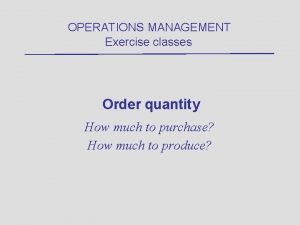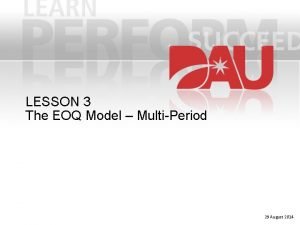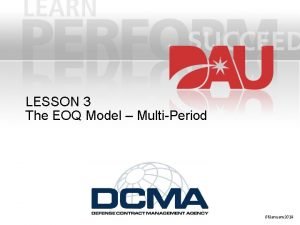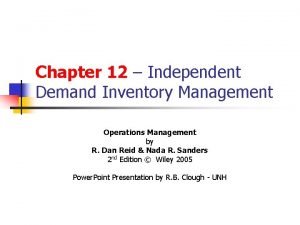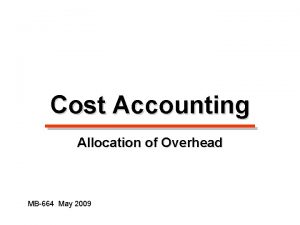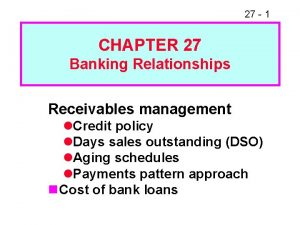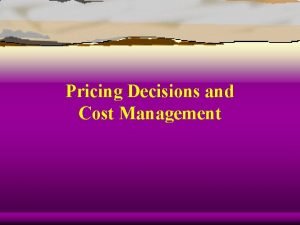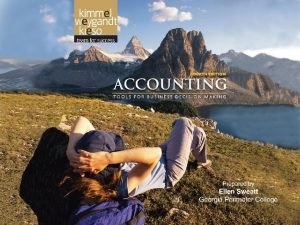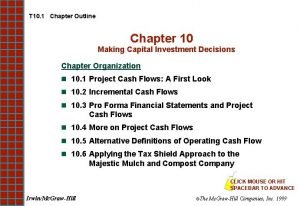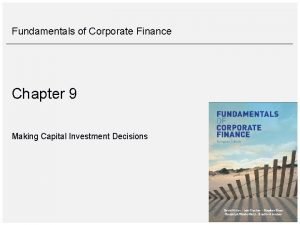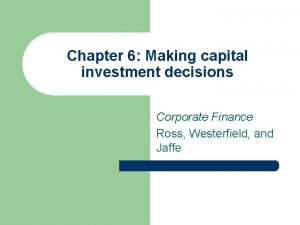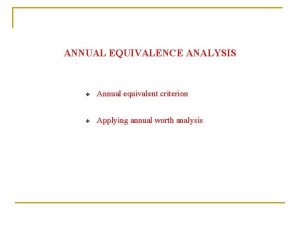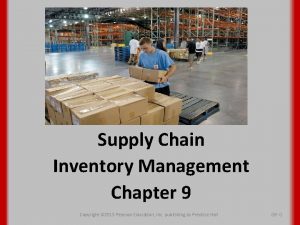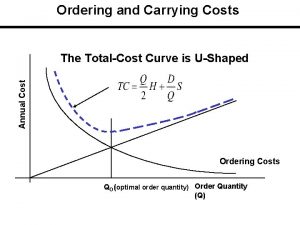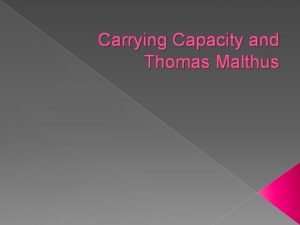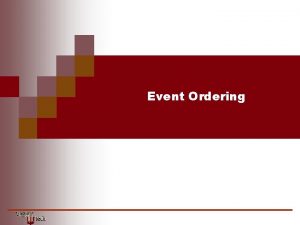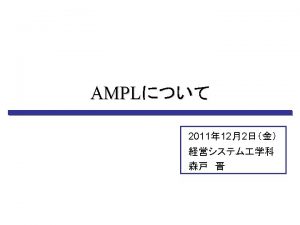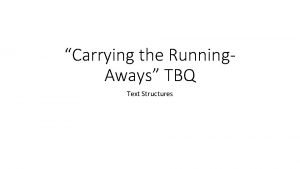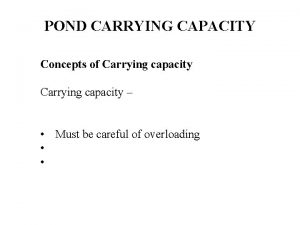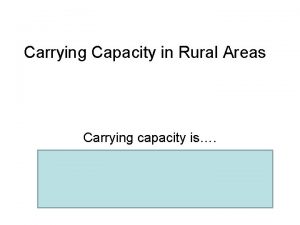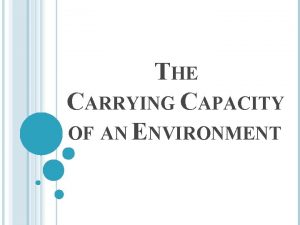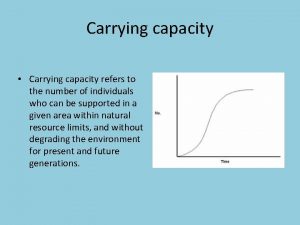Ordering and Carrying Costs Annual Cost The TotalCost
















- Slides: 16

Ordering and Carrying Costs Annual Cost The Total-Cost Curve is U-Shaped Ordering Costs QO (optimal order quantity) Order Quantity (Q)

Cost Total Cost Adding Purchasing cost doesn’t change EOQ TC with PD TC without PD PD 0 EOQ Quantity





Example Demand for a product is 816 units / year ==> D = 816 Ordering cost is 12$ / order ==> S = 12 Carrying cost is 4$ / unit / year ==> H = 4 Price schedule is as follows Quantity (Q) 1 -49 50 -79 80 -99 100 or more Price (P) 20 18 17 16 What is the best quantity that we could order to minimize our total annual cost.

Total Cost Including Purchasing Cost p 1 p 2 p 3 p 4 0 EOQ Quantity

Total Cost With Price Discount Cost p 1 p 2 0 EOQ p 3 p 4 Quantity

Total Cost Including Purchasing Cost p 1 p 2 p 3 0 EOQ p 4 Quantity

Total Cost Including Purchasing Cost p 1 p 2 p 4 p 3 0 EOQ Q Quantity

Total Cost Including Purchasing Cost p 1 p 2 0 EOQ p 4 p 3 Q Quantity

Total Cost Including Purchasing Cost p 1 p 3 p 2 0 EOQ Quantity p 4

Example Demand for a product is 816 units / year ==> D = 816 Ordering cost is 12$ / order ==> S = 12 Carrying cost is 4$ / unit / year ==> H = 4 Price schedule is as follows Quantity (Q) 1 -49 50 -79 80 -99 100 or more Price (P) 20 18 17 16 What is the best quantity that we could order to minimize our total annual cost.

Example (Q) 1 -49 50 -79 80 -99 100 or more (P) 20 18 17 16 Q = 70 is in the 50 -79 range, therefore, the corresponding price is 18 dollars. Obviously, we do not consider P = 20 but what about P = 17 or 16

Example Is Q = 70 and P = 18 better or Q = 80 and P = 17 or Q = 100 and P = 16 TC = HQ/2 + SD/Q + PD TC ( Q = 70 , P = 18) = 4(70)/2 +12(816)/70 + 18(816) TC = 14968 TC ( Q = 80 , P = 17) = 4(80)/2 +12(816)/80 + 17(816) TC = 14154 TC ( Q = 100 , P = 16) = 4(100)/2 +12(816)/100 + 16(816) TC = 13354
 Ordering cost and carrying cost
Ordering cost and carrying cost Poq model example
Poq model example Formula for eoq
Formula for eoq Eoq
Eoq Annual holding cost formula
Annual holding cost formula An ordering and receiving materials cost pool
An ordering and receiving materials cost pool Cost of carrying receivables
Cost of carrying receivables Incurrence of cost
Incurrence of cost The correct cost flow in a job order costing system is:
The correct cost flow in a job order costing system is: Equivalent annual cost
Equivalent annual cost Equivalent annual cost
Equivalent annual cost Working capital investment example
Working capital investment example Annual equivalent cost
Annual equivalent cost Total annual cost of inventory formula
Total annual cost of inventory formula Cost accumulation and cost assignment
Cost accumulation and cost assignment Cost accumulation and cost assignment
Cost accumulation and cost assignment Cost accumulation and cost assignment
Cost accumulation and cost assignment

